Until the development of germ theory in the late Victorian period, it was believed that ‘bad air’ caused diseases that ravaged communities and led to all manner of gruesome illnesses. Although now we know this not to be true, there is another silent killer in our atmosphere, bringing the idea of ‘bad air’ back into our minds - pollution.
In 2015, pollution was linked toone in six deathsworldwide. It sounds like a staggering statistic, and although it was most keenly felt in low- and middle-income countries, it still led to around 50,000 deaths in the United Kingdom through its contribution towards increased levels of heart disease, lung cancer and strokes.
Read more:
- Air pollution is killing us, here's how you can stop it
- Four ways you can help tackle air pollution
- Can I protect myself against air pollution?
So, what can be done about this poor air quality that is, quite literally, taking its toll on the public? In the open air it istraffic pollutionthat produces much of the particulate matter that is such a danger to our health (one highlighted by theDieselgate scandal), but inside the home, there are hidden dangers lurking from heating and cooking appliances, wood burners, cleaning products and unchecked mould and mildew.
Fortunately, not all smart home gadgets have been created for such lofty goals asbrewing a coffee while you’re still in bed, some have more practical, potentially life-saving uses. Here we check out five smart home air quality monitors that could mean the difference between sucking in fresh O2 or taking in a lung of muck.
1
Awair 2nd Edition
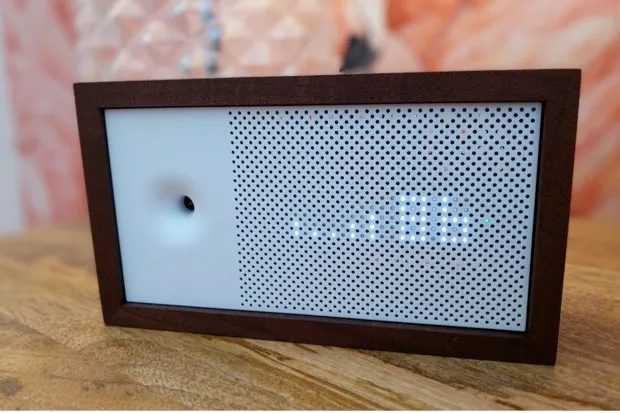
Information is key when it comes to monitoring the air quality of your room, and the Awair will keep you, well, aware of pretty much everything that is going on in the atmosphere around you.
It measures five different variables - temperature, humidity, CO2, chemicals and dust, including the most dangerous type of indoor air pollution, fine dust (PM2.5) – to give you an overall score of air quality, and plots this data in the accompanying app on an easy to read graph, with safe levels in green and dangerous levels rising through orange to red.
This gives you a good indication of what is happening in your room throughout the day, and you can easily see when there is a significant change, such as cleaning and vacuuming kicking up more dust and chemicals, or CO2 levels rising when there are people in the room.
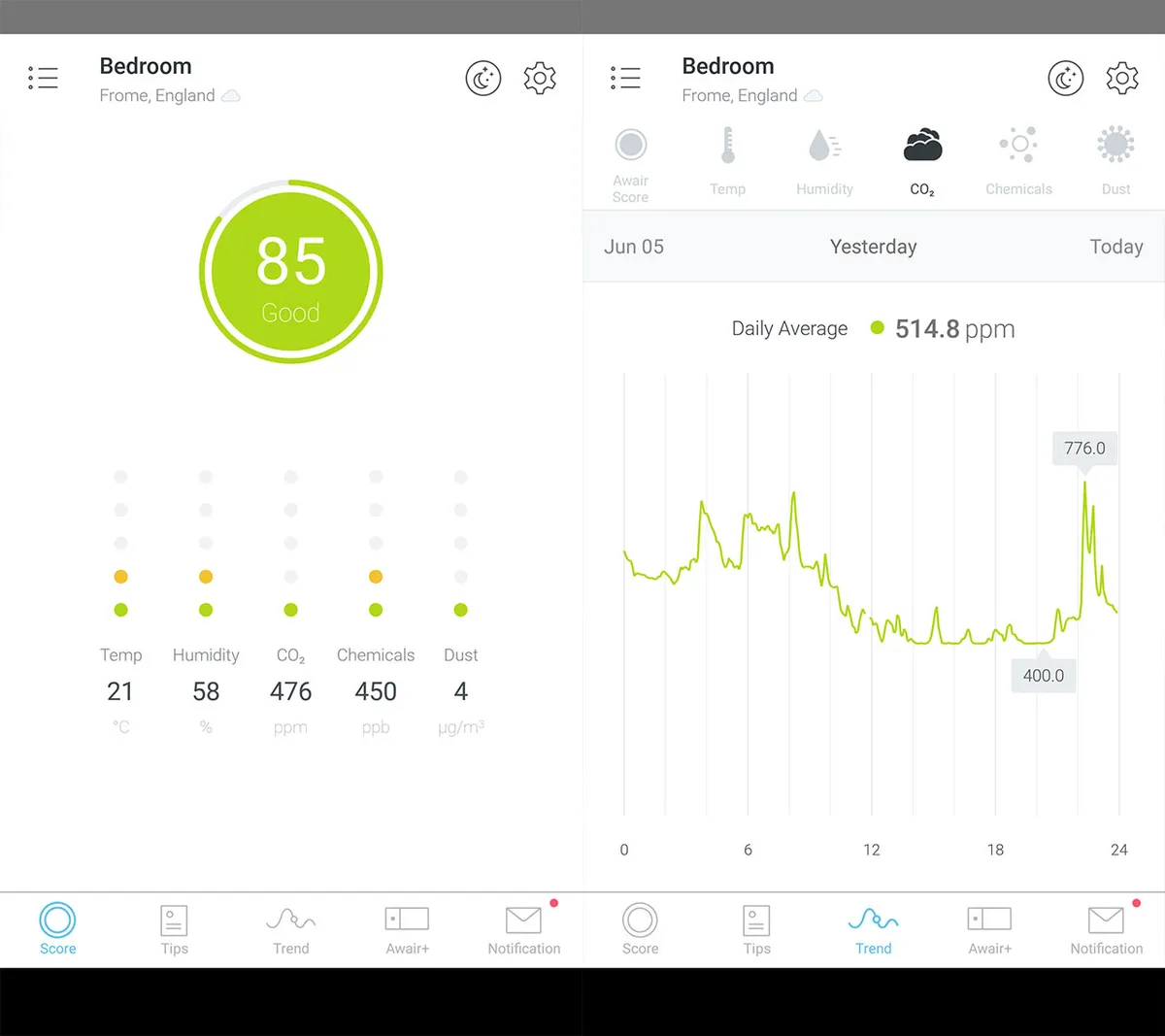
There are a few more neat features built in, the best being that you can set the air quality bar to be specific to certain targets, such as improving sleep (it’ll even send you a sleep report in the morning), or boosting your productivity. Of course, this is only information, so you still have to open the window or turn the heating down, but being a smart home device, you can hook it up to your Nest, IFTTT or Alexa to automate the heating or activate a fan/open windows if you have a suitable setup.
This makes it a pretty joined-up system for an air quality monitor, and the best looking of all the ones on test, with a dot-matrix façade displaying your overall score or the time, surrounded by a classy wooden bracket.
There are a few niggles with it though. It’s a shame that you cannot get daily, weekly or monthly averages to see if anything you are doing is having a long-term effect on your general air quality, and you can only set the clock to the 12-hour clock, a personal bugbear of mine.
Another irritant, which for me is more problematic than the apparently decent quality air in my room, is that it uses a proprietary power cable rather than USB, which clogs up one of the limited power ports beside my bed, but other than that this is easily one of the best air quality monitors around if it’s information you’re after, and one suited for use in the bedroom.
2
Airthings Wave Plus
The Airthings Wave Plus looks like you bog standard fire alarm, but it’s not. It measures radon. How much do you know about radon? Not a lot I’ll bet. Well let me enlighten you with a few radon facts.
It was discovered in 1900 by Friedrich Ernst Dorn, it’s the heaviest of the noble gases, and is responsible for around 1,100 deaths in the UK each year. The dangerous, radioactive element binds to dust that we breathe in, which sticks to our lungs and contributes to lung cancer. So in short, it is not a good thing to have high levels of in your homestead.
That makes the Airthings Wave Plus a pretty useful thing to have hanging around if you want to make sure your house is free from this completely colourless and odourless gas.
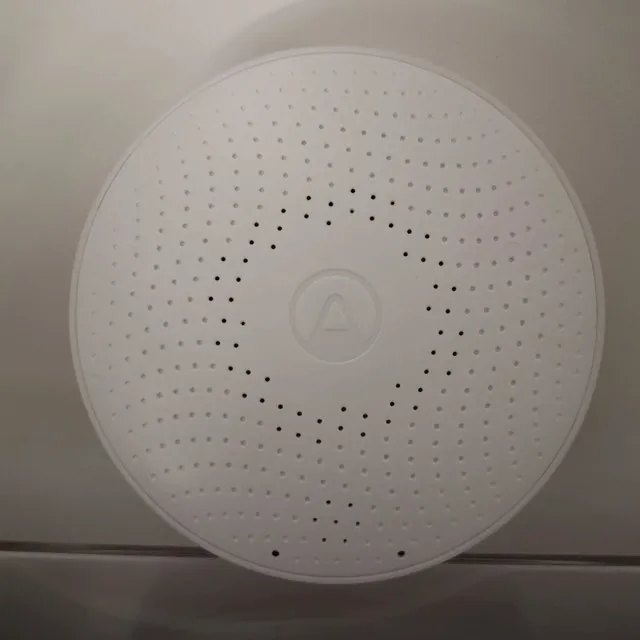
It’s not much to look at (unless you are into fire alarm chic), but if you want to see how dangerous your radon levels are, you just wave your hand in front of it, at which point it’ll glow a reassuring green if you’re good, orange for warning, and red for dangerous levels of radon (which is above 100 becquerels per cubic metre of air).
That’s far easier than delving into the app, although this in itself is actually pretty simple to use and intuitive. There aren’t reams of data there, but everything is pretty obvious from the off.
As well as monitoring for radon, it also tests the general air quality for volatile compounds, CO2 levels, humidity, air pressure and temperature, making it a Jack-of-all-trades when it comes to indoor air quality monitors.
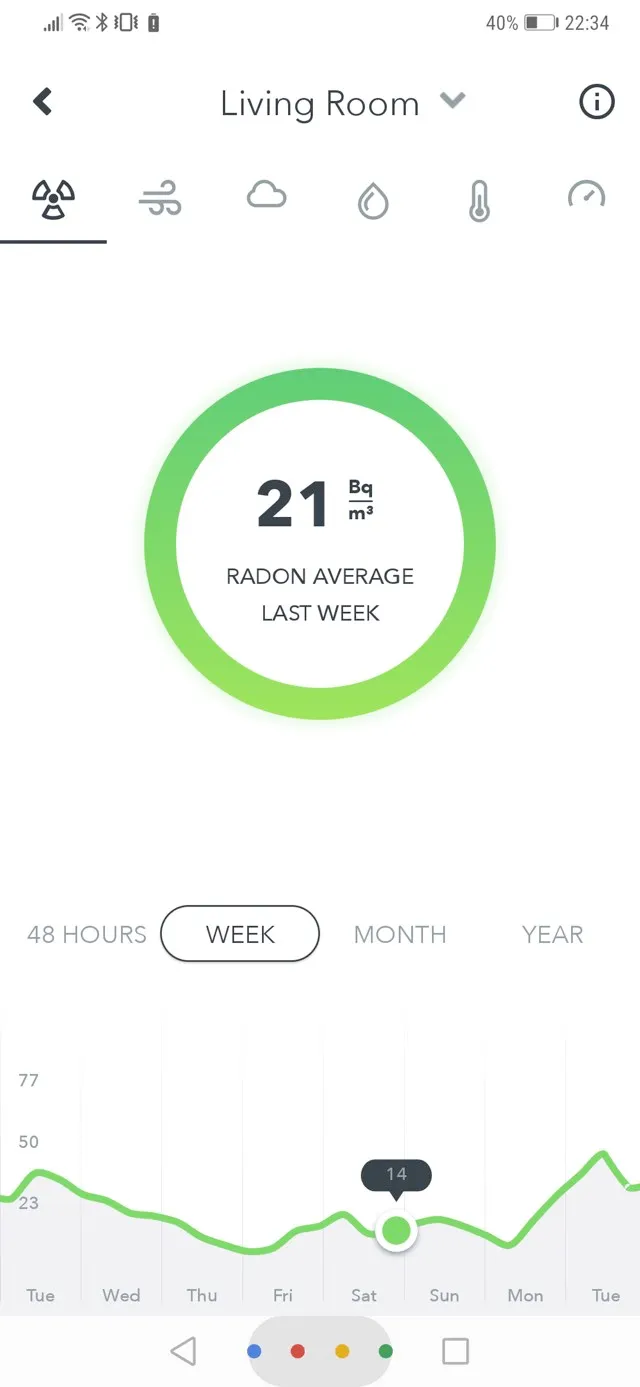
The only real downsides are minor. It took about a week to fully calibrate, and it can only connect to your phone via Bluetooth rather than via Wi-Fi, so you have to be physically near the device to sync your data.
It is also far from a budget option. If you don’t fancy forking out £239 for a radon kit, there is a cheaper Airthings Wave (£169), which measures radon, humidity and temperature, or you can order a home measurement pack from Public Health England. At £51.60, it is far cheaper, but you have to wait the best part of four months to get your results.
3
Foobot
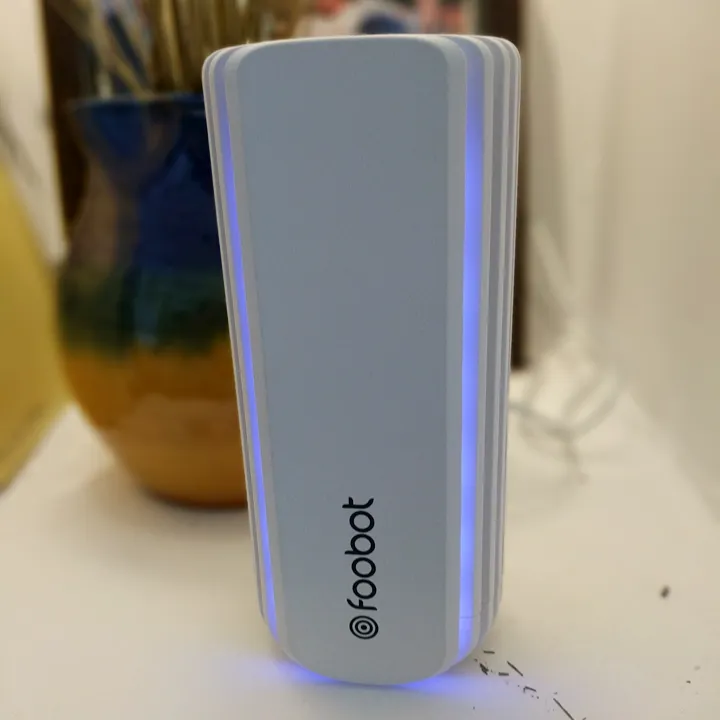
Like the Awair above, the Foobot is designed solely as an air quality monitor, so what you get is a data set brimming with helpful information to help you get the best out of (or into) the air.
At 172mm, the device itself is pretty big, but it does look futuristic and glows a reassuring blue when the air quality is good. This goes orange when things turn for the worse, so you get big visual clues as to how healthy the air is around you – much more obvious than the Awair’s score display.
To find out why you need to open a window, you have to dive into the app, which again measures the same five different variables – humidity, temperature, carbon dioxide, dust (as particulate matter) and chemicals (as volatile compounds).
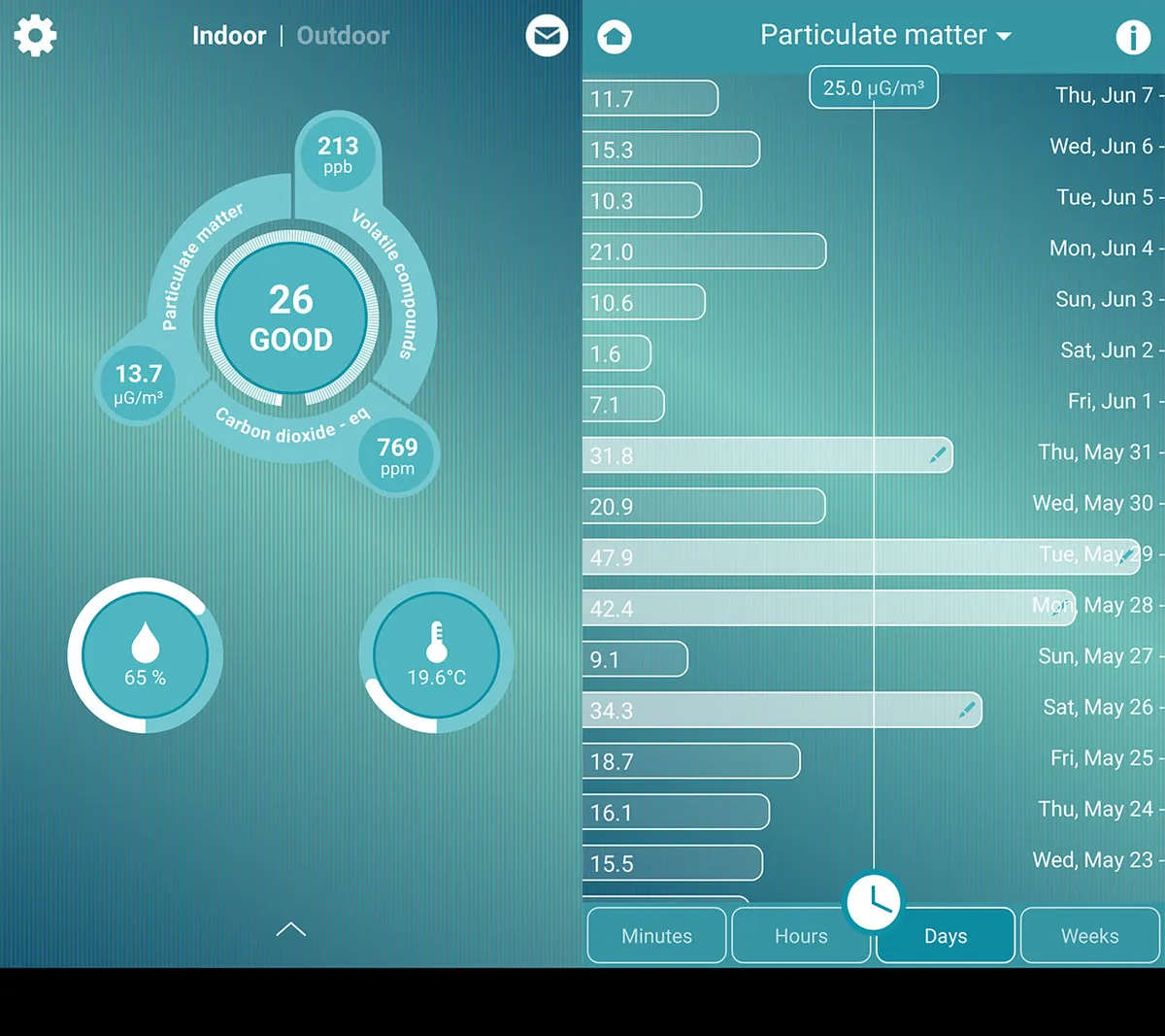
There are a few neat things that the Foobot app does, and a few things that are a little weird. It’s great that you can check the global pollution index to see what the outside air is like in your neighbourhood, but for me the closest place it could measure was a town nearly 10 miles away, so not wildly accurate.
It also averages your data over minutes, hours, days or weeks for tracking overall trends, and you can tag specific events, albeit it with varying degrees of usefulness (Olfactive decoratoranyone?).
Also unhelpful are the tips it gives you to clear the air. The tip to reduce volatile organic compounds is “Cleaning with chemicals is like poisoning your body. You can’t beat the dust without harming yourself.” This is not a tip, if anything it makes me feel guilty about actually cleaning and less likely to do it. Other choice tips involve opening a window (obviously) or changing your cooker (not exactly practical).
That said though, what you really need it to do is let you know the quality of the air, and that it seems to do well. For the sake of this test, I fell on my sword and decided to cut the grass with the window open, incurring the wrath of all the pollen kicked up, aggravating my hay fever. Almost immediately the Foobot was glowing orange, warning me that what I was doing a particularly foolhardy thing with regards to air quality.
4
Nest Protect
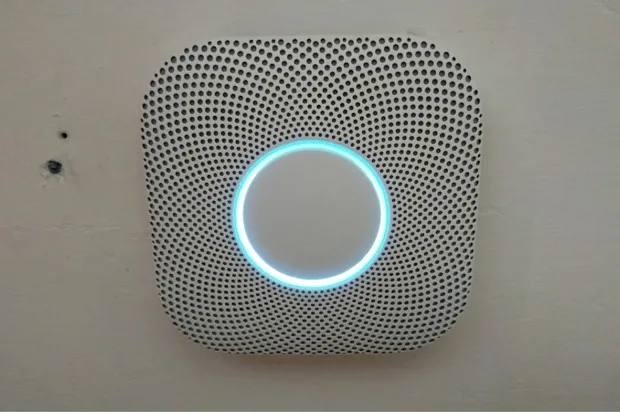
Whereas all the other gadgets tested are great for informing you how mucky your air is, the Nest Protect is the only one that actively forces you to do anything about it. It is, for all intents and purposes, a smoke alarm, but one that has Nest levels of quality and usability all over it.
For a start, it uses two different sensors to detect which type of fire is burning – a raging, fast-burning one or slow, smouldering one – to give you a better indication as to what is happening, and in either case it will burst out a loud, 85dB siren, as well as sending all of your household a notification on the app.
To avoid false alarms, it has a humidity sensor so that it receives fewer false alerts from steam, and similarly a special screen to protect the sensor from any bugs or other intruders that might spark it off.
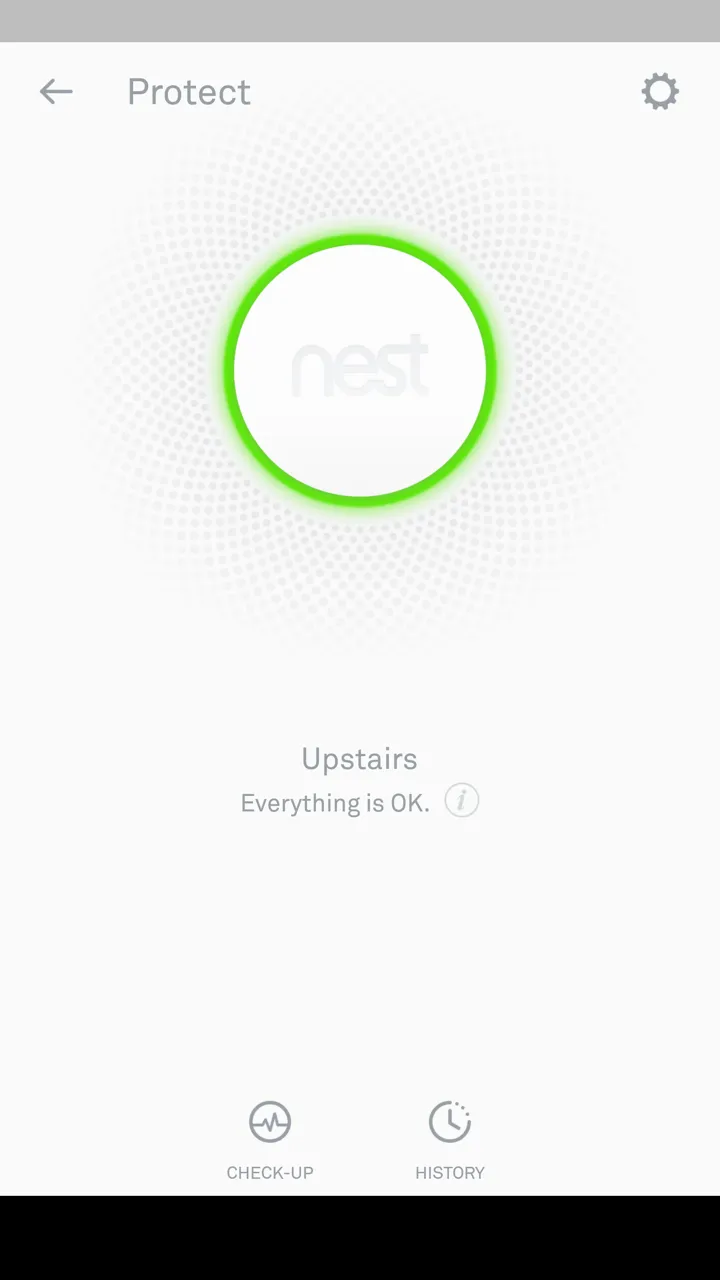
Critically, it also has the added benefit of adding a carbon monoxide alarm. The signs of a fire breaking out in your home are pretty obvious (fire and smoke are the big giveaways), but carbon monoxide has no taste or smell, and symptoms of exposure can be easily mistaken forhaving a cold or flu.
The consequences of being exposed to high levels of CO can be life-changing, and at times deadly, with around 25 deaths a year in England and Wales from carbon monoxide poisoning. The immediate solution to a CO leak is to open all of the doors and windows, and going out to get fresh air, and the Nest Protect gives a distinct alarm and glows red when it detects unsafe levels.
That’s your two basic air quality tests, and although you don’t get any data as to the general quality of your air, a simple thumbs-up or -down is enough when it comes to matters of life and death.
That said, there are a heap of other handy features, like a bright light that shines down when it detects movement to help you wander through dark corridors, or integration with the Nest Thermostat to switch the heating off when it detects CO and stop it spreading.
Another particular favourite of mine is that instead of going off at the slightest whiff of burnt toast (a common occurrence), it will give you a far less dramatic Heads-Up alert, which gives a spoken warning and notification on your phone that can be switched off without having to trundle upstairs and reaching for a button on the alarm.
5
Nokia Home
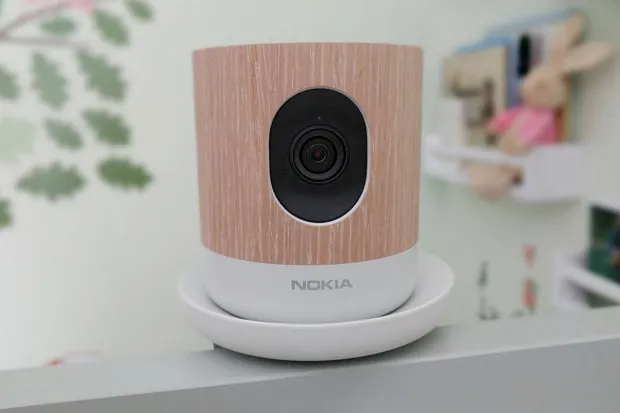
An unfortunate victim the Withings, then Nokia, then Withings fiasco, the Nokia Home is no longer available, but you can still pick one up reasonably cheaply second hand. Although I've not been able to test whether the app still works, as a device it's still well worth considering, but do bear in mind though that as a discontinued product, the last update was over a year ago, and can no longer be considered a secure device. And given this device is squarely aimed at the nursery, you might want to think hard as to whether this is the right choice for you.
For any parents out there, if there’s one room you’d be willing to sacrifice the good air in all other rooms for, it would be your child’s bedroom - who wouldn’t want their darling little cherub breathing in anything but the finest quality O2?
As an air quality monitor in itself, it is a little basic, despite this being one of the gadgets main selling points. The only measure is forVolatile Organic Compounds - basically dust and nasty particles - and to see historical data you have to dig quite deeply into the app. If you want to know more, like the carbon dioxide levels, temperature or anything else, you’ll need a more specialised device.
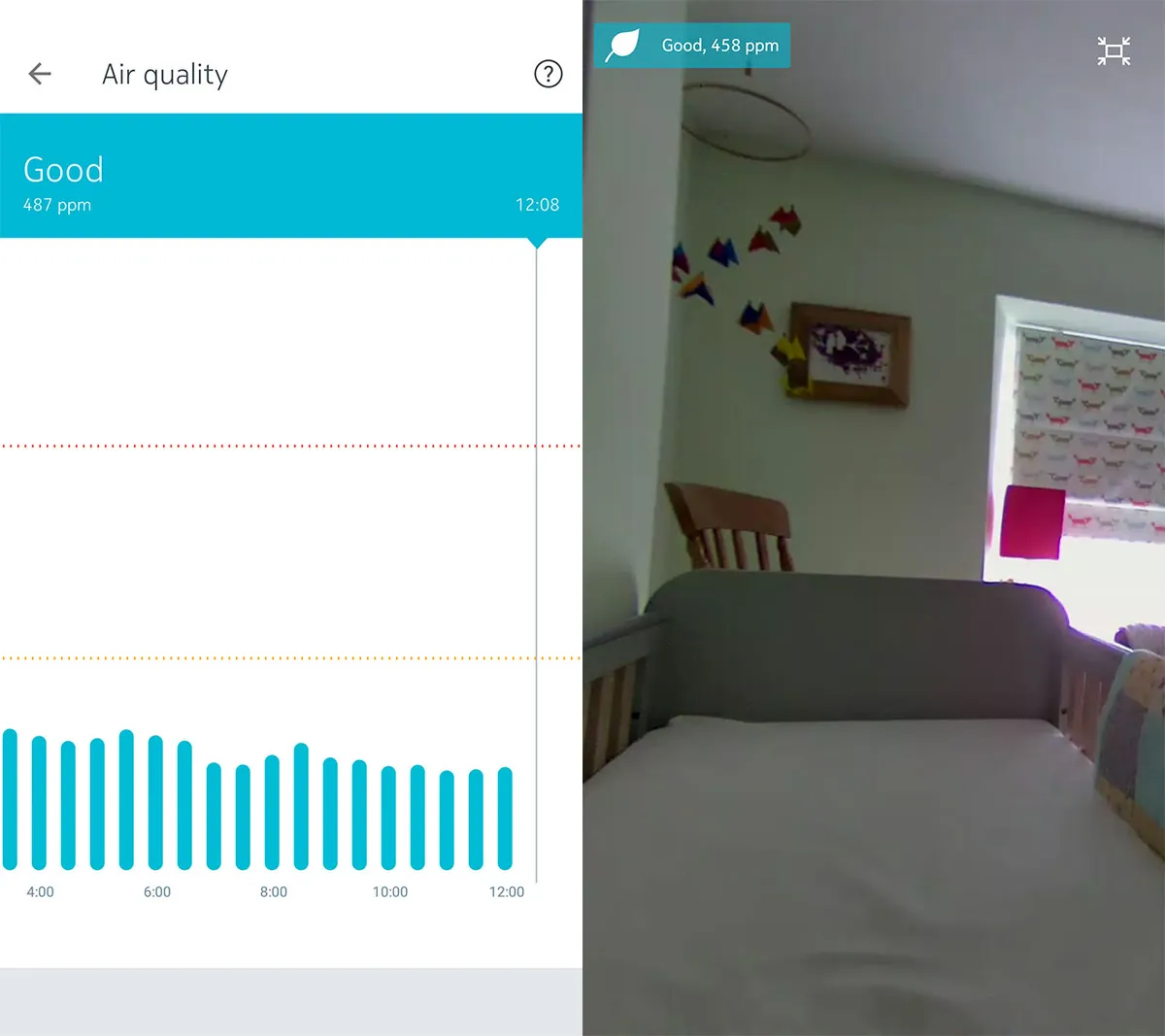
But, what it does have is a HD 135° wide-angle video camera, making it an excellent baby monitor. In fact, let’s not beat around the bush, this is a baby monitor; there’s a baby monitor mode that sends you a notification at the slightest snuffle or wriggle from your sprog, it can sing lullabies, it has night vision and two-way talking so you can sing them to sleep without having to risk stepping foot on a creaky floorboard.
If you’re looking for something that gives you as much information about the air your little one is breathing, there are other air quality monitors to try, but if you want a baby monitor thrown in for good measure, this is probably the best one.
